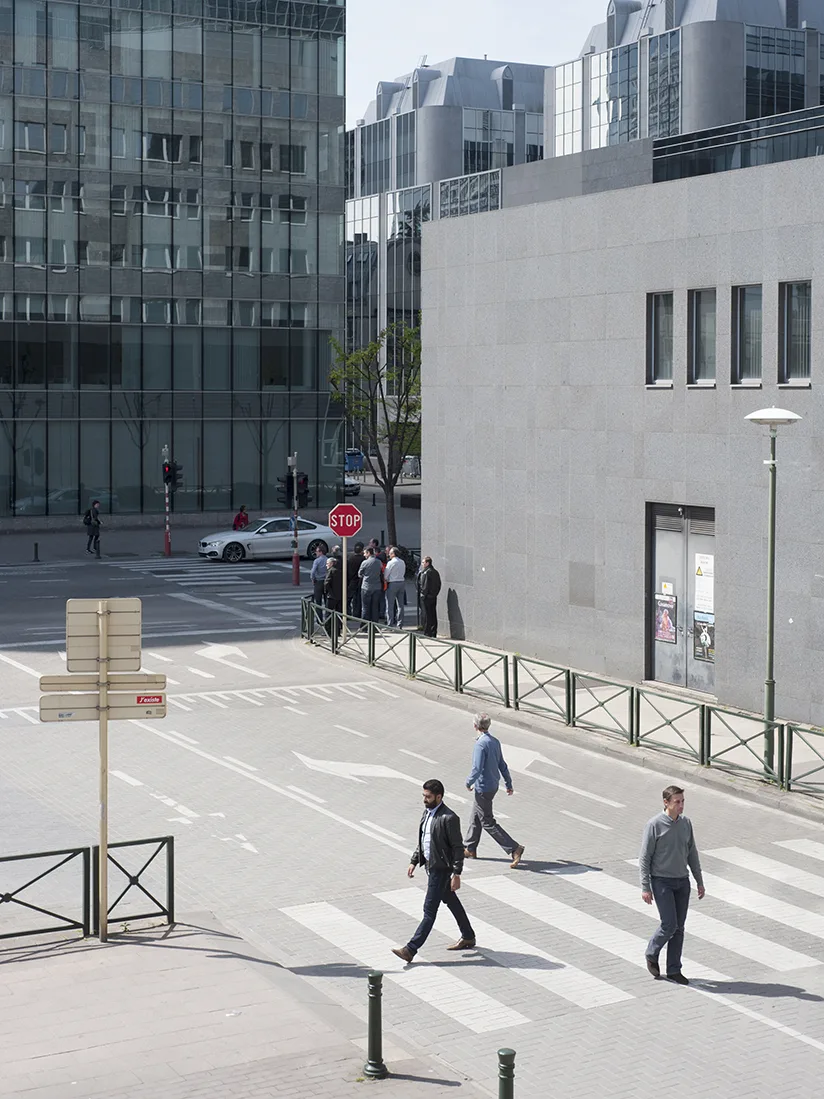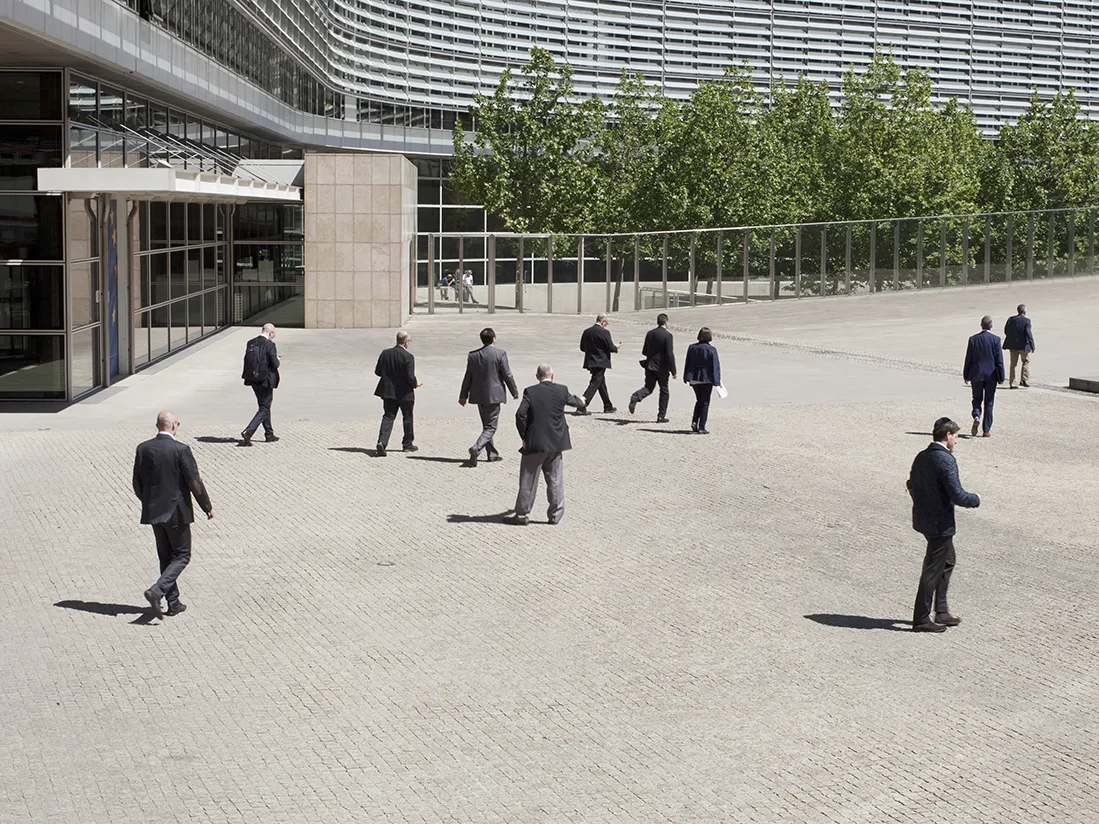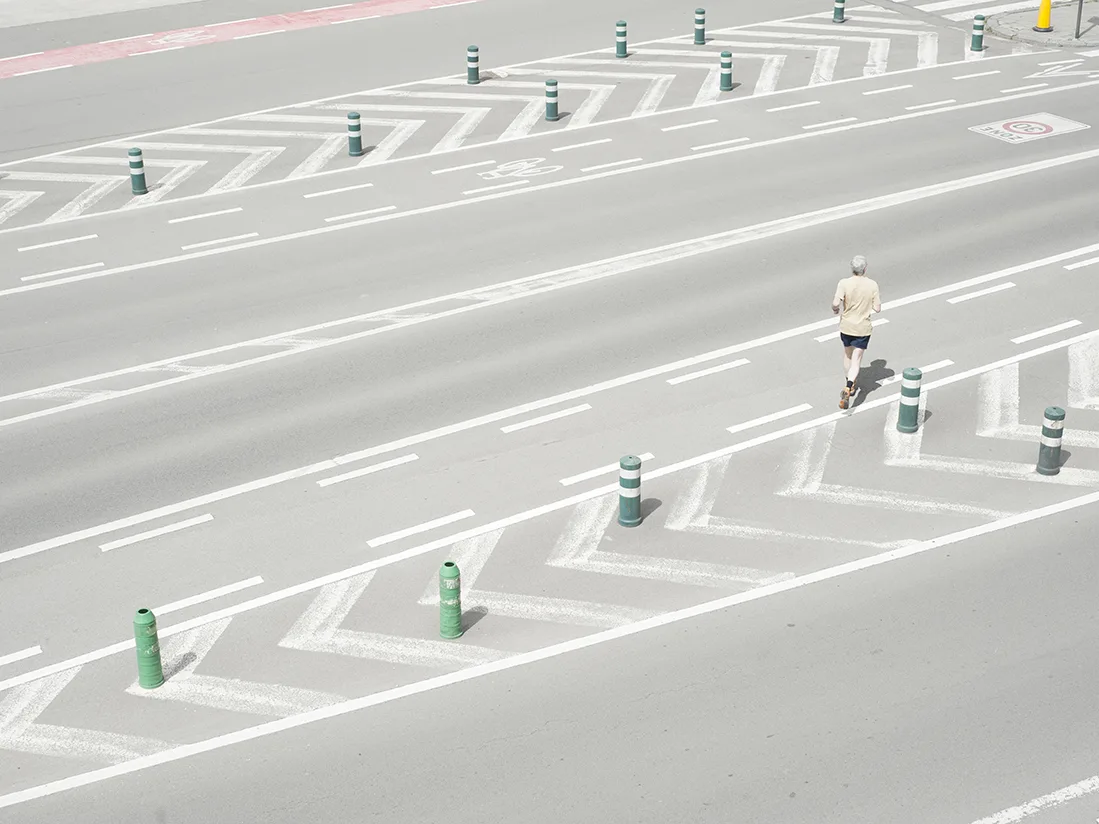
From the moment we enter high school, we all become conscious about the importance of belonging to a group. However, at the same time we love to think we're different when it comes to our fashion sense, music taste, hobbies etc. It’s a constant game of fitting in, while showing how unique we are.
Young Dutch photographer Esther Hovers plays with this tension in her graduation project False Positives. In this series she critiques surveillance systems and the way they position individuals in- or outside a given norm. In Esther’s photos you look down on the subjects, as if you are actually inside a surveillance camera spying on these people. She questions what is normal and what is abnormal, what is acceptable and what is criminal.
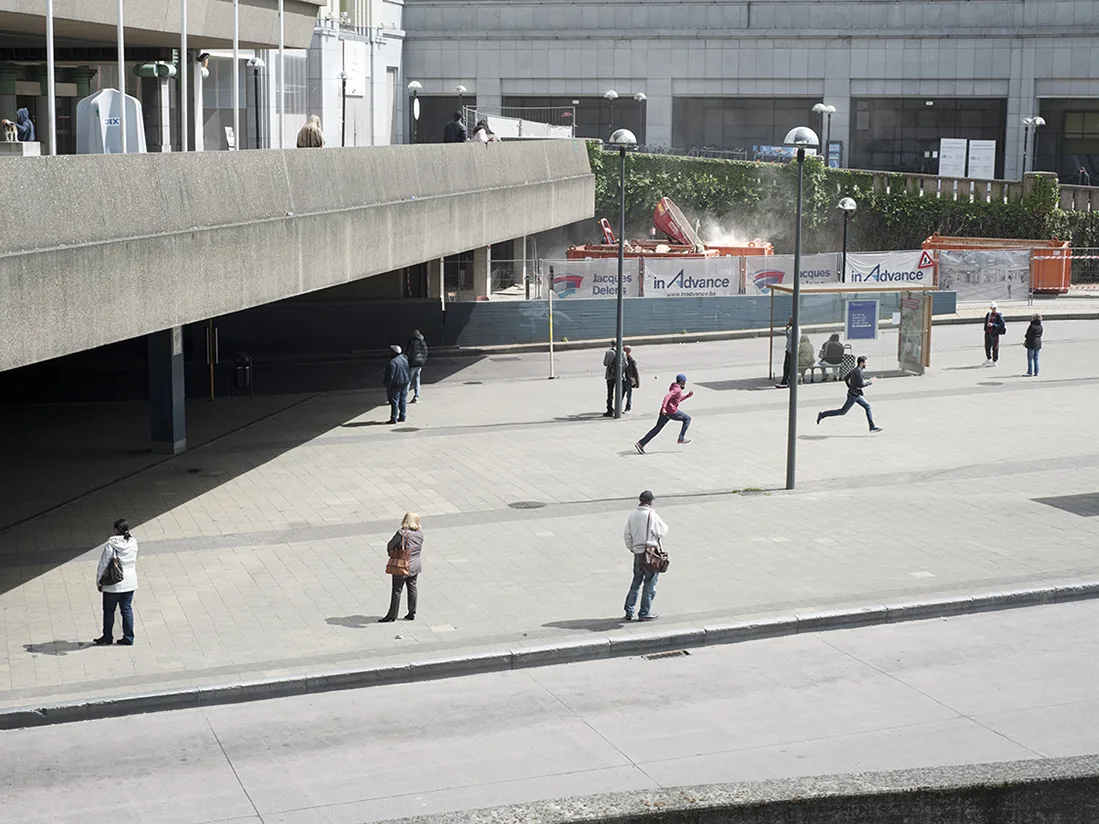
Can you start with explaining why you started this series?
I was interested in the relationship between people and movement in architecture and how that influenced one another.
When I was interning in Paris, I photographed a lot in the business area, La Défense, and I was intrigued by how it’s a very planned and organized space in terms of architecture. The more I photographed there, the more my images began to look like surveillance images and so I started to look into intelligence surveillance. It’s about this idea of analyzing movement within space.
Eventually I decided to photograph the whole series in Brussels, for two reasons. Firstly it’s the European capital – it has this symbolic meaning. Secondly, from a more practical perspective; I was looking to find higher viewpoints and Brussels being a city with hills, it just made sense.
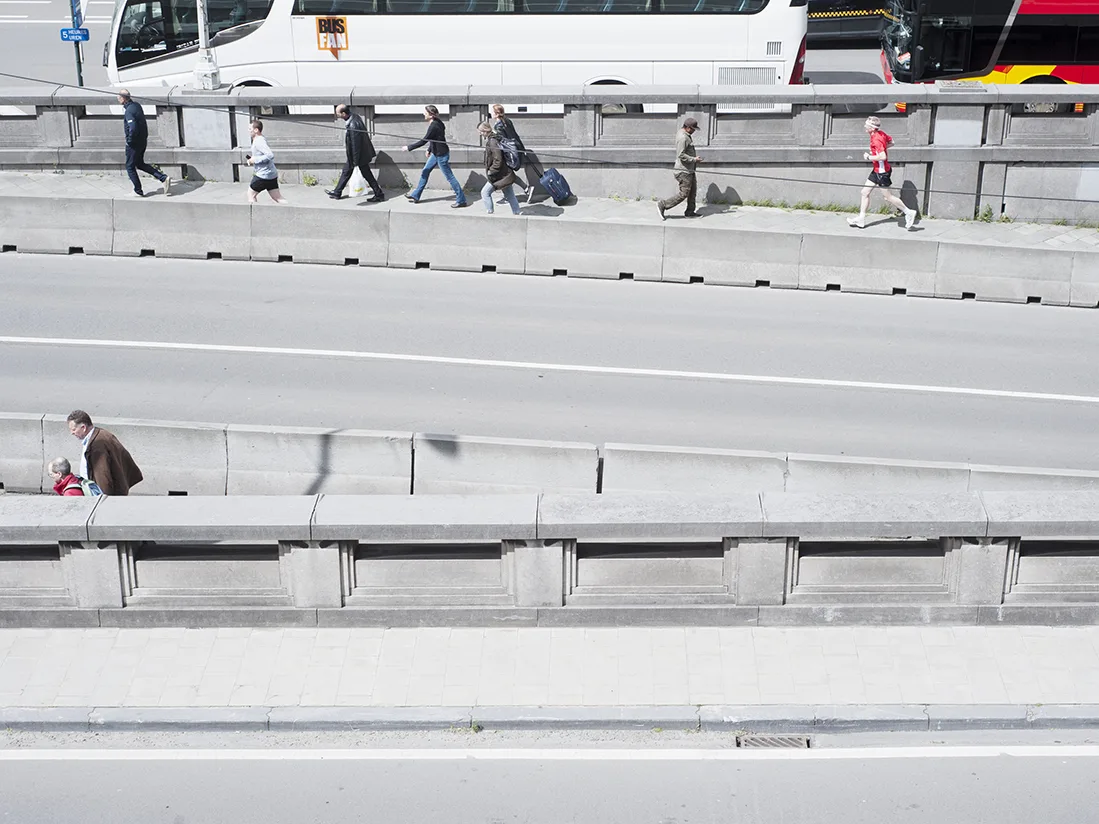
You worked with surveillance experts – what was it like working with these people who are not embedded in the art scene at all?
It was very interesting to work with people from different backgrounds. Most of them were professors in intelligence surveillance in Dutch universities. I was quite surprised to find out how accessible this information and knowledge is.
I interviewed them several times in order to understand how the different techniques works and then translated this information into an artwork that is rooted in my theoretical research.
What aspects of this research made its way into your project?
I based my project on eight anomalies, but in fact there are many more.
Let’s say you are observing a square, and you feed it with as much surveillance material as possible. After a while, the more footage you have, the easier it gets to observe a pattern in a specific area. In this pattern you can find the anomalies. It’s really about the contrast between normal and deviant behavior.
In my book the anomalies are really basic movements, such as running, groups breaking up, synchronized movements in groups or people standing still for a long time. But in fact it is very much about the contrast between the majority and individuals. So it’s more about if everyone is constantly moving and one person is standing still, or everyone is walking a certain direction but just one person is walking the other way.
How long were you waiting around for people to actually show these deviances from the norm?
It’s a mix. Some of the images, or some of the movement within the images, are staged. I took the liberty to ask people to move a bit or to run, but others just happened to be there.
I have a quite specific way of working, in which I put my camera on a tripod and choose my frame, then I’ll wait for people to pass and photograph them, or I ask people to act out one of these anomalies. Afterwards I layer all these images, so everyone you see was there at some point, but not necessarily at the same moment.
Do you want to inform or is it more about questioning these kind of practices?
I want to question the ethics of it. But I think in order to do that, you have to understand it at least on a basic level, so there’s a part of informing people. However I don’t think that the job of an artist is strictly to inform – there’s some critical thinking there as well.
I wanted to simulate it visually to explain how these systems work, but also because I want to put the viewer in the position of passing judgement, of looking at this question of normality or deviance. It’s about questioning what is normal rather than what is criminal.
I’m quite critical of the judgement these systems could impose on people. Right now people feel this extreme need for security, which is very understandable, but at what cause?
